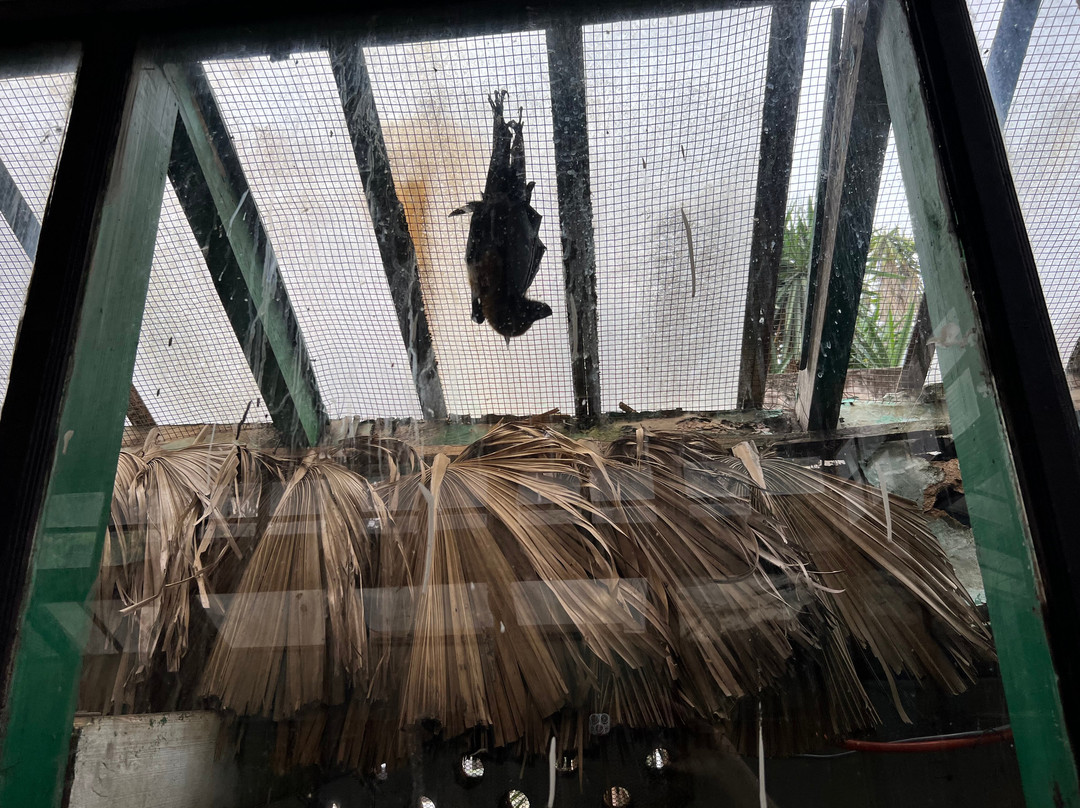的点评
A national disgrace. Avoid. 0/5.
Tsimbazaza Zoo的点评
点评:I have visited Park Tsimbazaza many times over the past decade, for various purposes and I have always been left saddened. Animal welfare standards are not met, despite the caption of this attraction. During my last visit (Sept, 2023), it was clear that it the zoo has fallen into a state of complete disrepair. For a country whose biodiversity and incredible natural heritage is its main attraction - this truly is a national disgrace. The only animals left alive (in appalling conditions) are those that are capable of suffering long-term… e.g., a few giant tortoises, crocodiles and the odd camel (actually most have now died, and only 1 is left). The lemurs mostly all perished last year from a respiratory virus, likely passed by humans since the staff poorly paid often attempt to gain extra money from tourists by allowing them to entry their enclosures and stroke and pose with the lemurs on their shoulders. Perhaps the saddest thing about the whole zoo though, is the pair of Critically Endangered fish eagles that have spent at least the past decade in a tiny cage, unable to fly and being teased by children. I could not bring myself to photograph them. There is a tiny glasshouse with a single flying fox, again so space restricted it cannot fly. The Fosa are all dead (probably a mercy). To call this is a zoo is shocking. The museum, the nocturnal lemur house and the amphibian house have been shut for years (animals all dead). The place is filthy. The green ponds are full of rubbish and dead fish.
If the zoo was to be directed by anyone with even a scintilla of animal husbandry experience, or the slightest conservation oriented mindset, this could be an excellent national asset which could likely attract great international support and funding and potentially even serve as a proper zoo. Instead, it’s unfit to house animals and functions solely as a picnic site and a place to recoup an income for its politically installed head. Where is the outrage amongst the generations of graduate biologists and environmentalists? A very sad place indeed. Perhaps the only positive, the peacocks appear to be thriving.
If the zoo was to be directed by anyone with even a scintilla of animal husbandry experience, or the slightest conservation oriented mindset, this could be an excellent national asset which could likely attract great international support and funding and potentially even serve as a proper zoo. Instead, it’s unfit to house animals and functions solely as a picnic site and a place to recoup an income for its politically installed head. Where is the outrage amongst the generations of graduate biologists and environmentalists? A very sad place indeed. Perhaps the only positive, the peacocks appear to be thriving.
翻译:在过去的十年里,我出于各种目的多次参观钦巴扎扎公园,但我总是感到悲伤。尽管有此景点的标题,但仍不符合动物福利标准。在我上次访问期间(2023 年 9 月),很明显动物园已陷入完全失修的状态。对于一个以生物多样性和令人难以置信的自然遗产为主要吸引力的国家来说,这确实是一个国家的耻辱。唯一幸存的动物(在可怕的条件下)是那些能够长期忍受痛苦的动物……例如,一些巨型乌龟、鳄鱼和奇怪的骆驼(实际上大多数现在已经死亡,只剩下一只)。去年,狐猴大多死于呼吸道病毒,这种病毒很可能是由人类传播的,因为工作人员工资微薄,经常试图通过允许游客进入围栏、抚摸狐猴并在肩上摆姿势来从游客那里获得额外的钱。也许整个动物园最悲伤的事情是一对极度濒危的鱼鹰,它们至少在过去的十年里一直被关在一个小笼子里,无法飞翔,还被孩子们戏弄。我无法让自己给他们拍照。有一个小温室,里面有一只狐蝠,同样,空间有限,它无法飞翔。福萨一家都死了(可能是一种怜悯)。称这是动物园真是令人震惊。博物馆、夜间狐猴馆和两栖动物馆已关闭多年(动物全部死亡)。这个地方很脏。绿色的池塘里满是垃圾和死鱼。
如果动物园由任何有一点点畜牧经验或有一点保护意识的人来管理,那么这可能是一项优秀的国家资产,可能会吸引大量的国际支持和资金,甚至有可能成为一个合适的动物园。相反,它不适合饲养动物,只能作为野餐场所和为其政治上的领导人收回收入的地方。几代研究生生物学家和环保主义者的愤怒在哪里?确实是一个非常悲伤的地方。也许唯一的积极因素是,孔雀似乎正在蓬勃发展。
如果动物园由任何有一点点畜牧经验或有一点保护意识的人来管理,那么这可能是一项优秀的国家资产,可能会吸引大量的国际支持和资金,甚至有可能成为一个合适的动物园。相反,它不适合饲养动物,只能作为野餐场所和为其政治上的领导人收回收入的地方。几代研究生生物学家和环保主义者的愤怒在哪里?确实是一个非常悲伤的地方。也许唯一的积极因素是,孔雀似乎正在蓬勃发展。

此点评仅代表旅行者个人的主观意见,并不代表TripAdvisor以及其合作方的意见。
关于我们
|
新闻动态
|
商务合作
|
会员中心
|
业主中心
|
业主通
|
常见问题
|
意见反馈
|
联系我们
|
营业执照
© 2025 Tripadvisor 版权所有。
使用条款 |隐私政策 |网站工作原理
部分照片由 VFM Leonardo 提供。
* Tripadvisor不是旅行社,也不是旅游预订服务代理商。我们提供免费、客观、公正的旅游资讯服务。 (显示更多)
TripAdvisor LLC 既不是预订代理商,也不是旅游运营商,不会向网站用户收取任何服务费。 按照规定,在 Tripadvisor 发布机票价格、游览和旅行套餐的合作伙伴(航空公司、旅行提供商及预订代理商),其标价须包含所有费用和附加费用。 例如, 机场出入境税费、消费税与其他服务费、手续费、杂费及附加费用。 当您向我们的某个合作伙伴进行预订时,请务必查阅他们的网站以了解当地行政部门要求的所有适用费用的具体情况。 除非另有说明,机票价格通常指的是一个人的价格(以人民币计)。
为方便起见,TripAdvisor LLC 根据从我们的预订合作伙伴获取的空房率计算每个酒店的均价。 对于游览和景点来说,所显示价格通常是每位成人的最低可用价格。 对于列出的任何旅行套餐或优惠,TripAdvisor LLC 无法保证任何特定的费率或价格。 此外,酒店均价每晚会更新,并以您的首选币种表示(使用现行汇率)。 由于这些已换算的价格是预估价格,因此,有关具体金额和币种请与预订网站进行核实。
此外,TripAdvisor LLC 无法保证我们网站上宣传的价格随时有效。 标价可能需要预订一定天数才能生效,或有不可用日期、使用条件或限制。
TripAdvisor公司对外部网站的内容一概不负责。优惠价格中不含税和其他费用。
ICP证:沪B2-20200433
沪ICP备20013175号
 沪公网安备31010502005427号
沪公网安备31010502005427号鹰程信息技术(上海)有限公司
货币/国家及地区
¥CNY
中国

